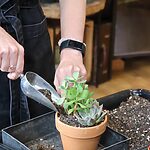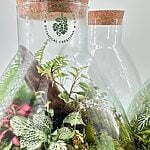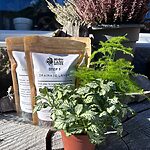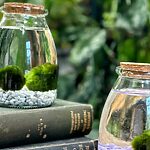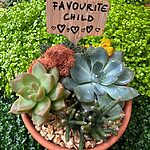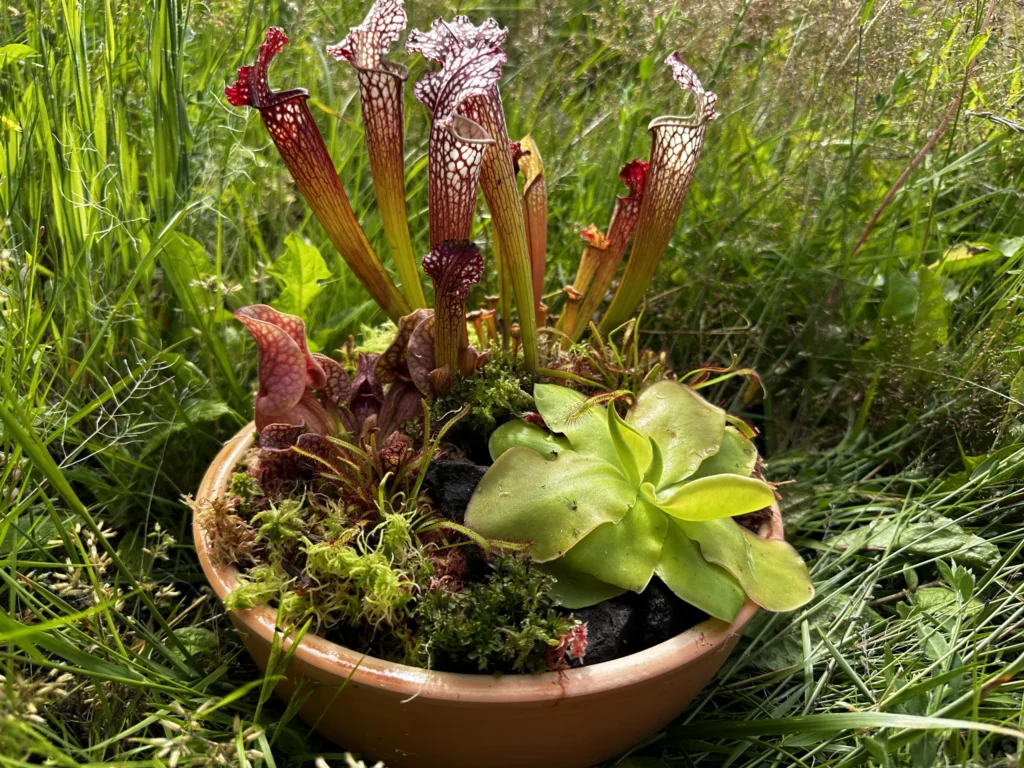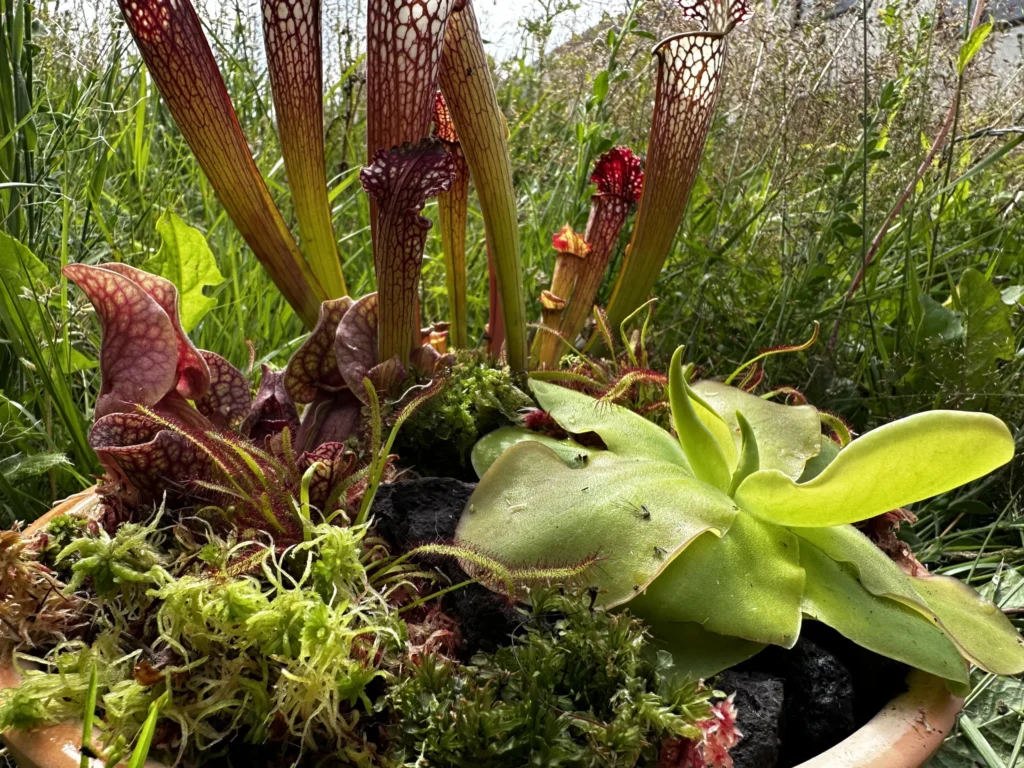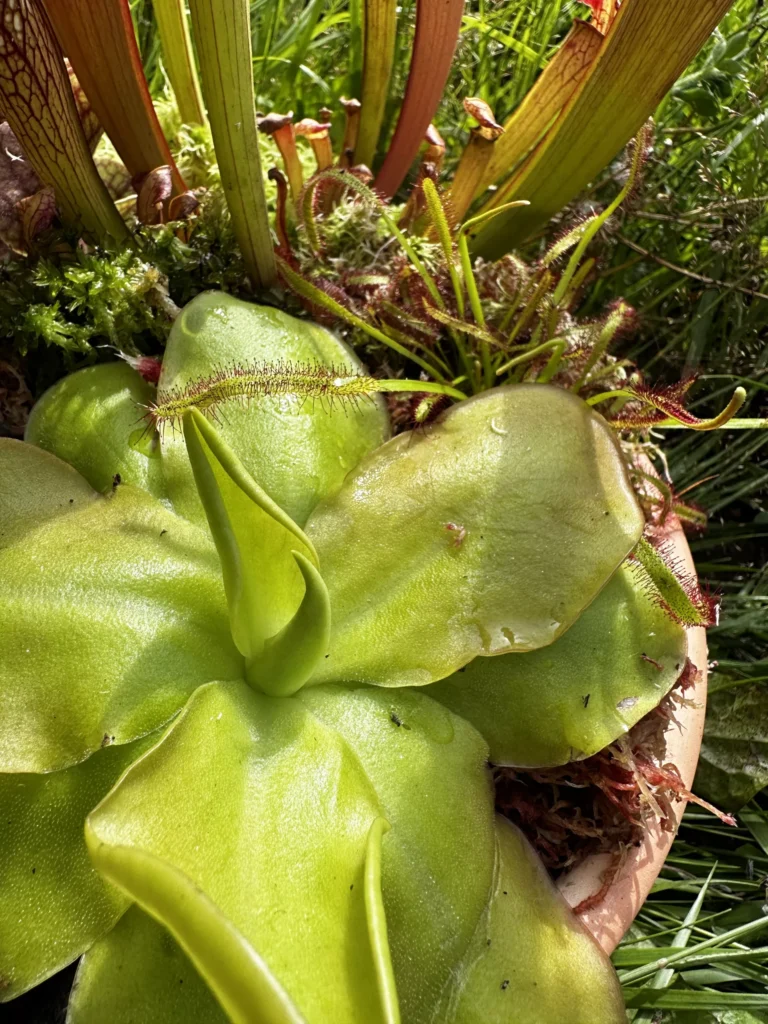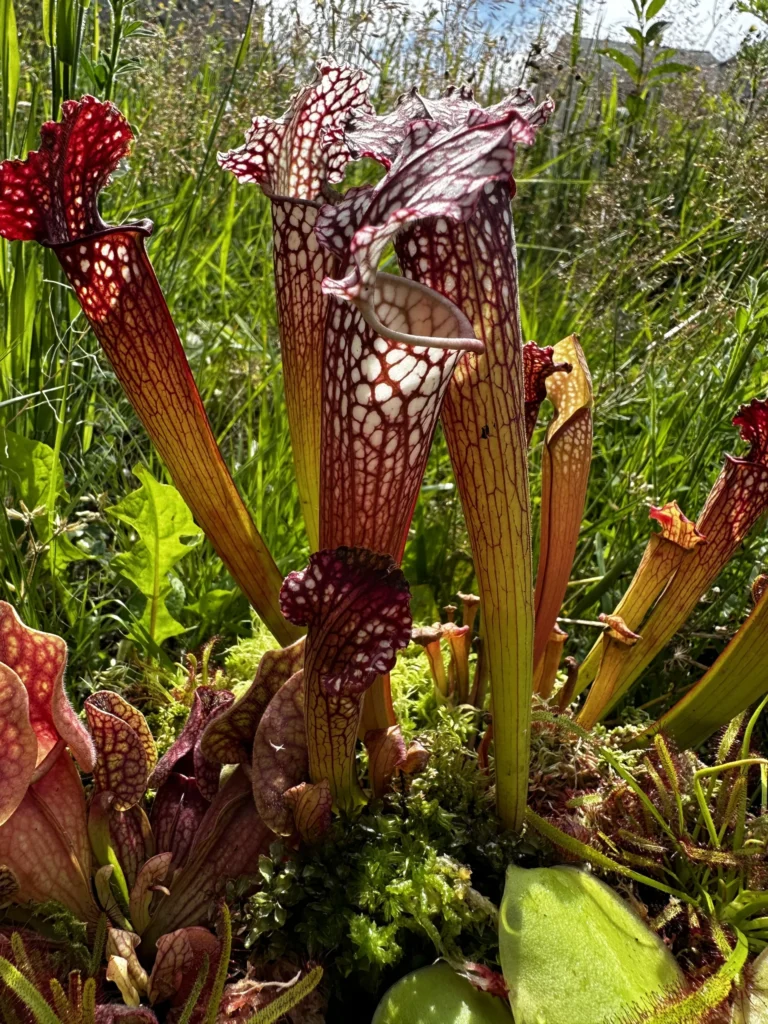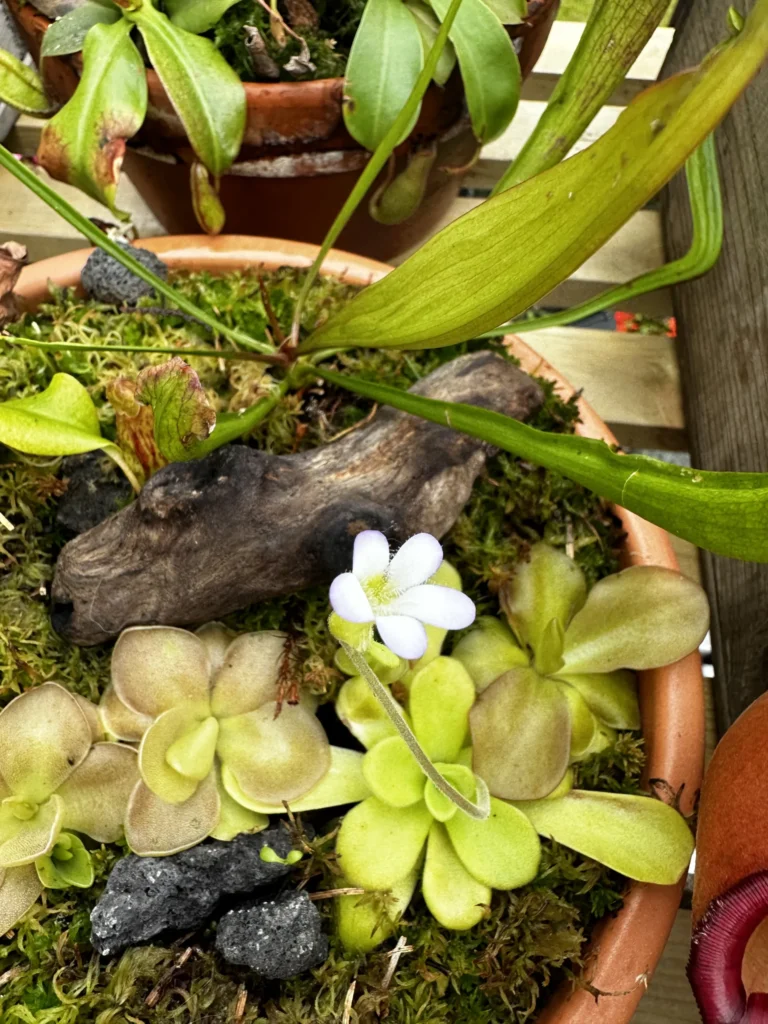Welcome to the captivating realm of carnivorous houseplants! At Highland Moss, we are fascinated by the diverse and enchanting world of these unique botanical wonders. From Venus flytraps that snap shut on unsuspecting prey to pitcher plants that lure insects into their gooey traps, these extraordinary plants have evolved seriously cunning tactics to survive in nutrient-poor environments. We have just taken delivery of a bunch of interesting carnivorous plants that will brighten up your home. In this blog, we will review the types of carnivorous houseplants we have in stock.
If you are looking to repot your existing carnivorous houseplant, we offer both a repotting service and specialist carnivorous houseplant soil. Regular garden centre potting soil is not best suited for carnivorous plants as they contain excess minerals that will kill the plants. If you have any queries about your current carnivorous plants and how to best care for them, check out our plant hospital service, we will be happy to recommend the best care strategy to help your houseplant thrive.
If you are intrigued by the idea of having a quirky, bug-eating buddy on your windowsill, hold on tight as we take you on a thrilling tour through the fascinating variations of carnivorous houseplants. Get ready to explore the mysterious and mesmerizing flora that will leave you in awe of nature’s boundless creativity!

Venus Flytrap
Meet the Venus flytrap (Dionaea muscipula), the ultimate poster child of the carnivorous houseplant world! This extraordinary botanical marvel, native to the boggy landscapes of North and South Carolina, has captured the imaginations of plant enthusiasts and curious minds alike. With its striking appearance and unique hunting mechanism, the Venus flytrap is not your typical houseplant. But don’t be fooled by its delicate beauty, for this green predator is anything but passive. With an appetite for insects and a touch-sensitive trap that snaps shut in a flash, the Venus flytrap is a true marvel of evolution.
The Venus flytrap loves full sun and is a perfect houseplant to have on a sunny windowsill or conservatory. The Venus flytrap is a hardy houseplant that can even grow in an unheated greenhouse over the winter months. During winter this houseplant will not catch anything and will proceed to go into a hibernated dormant state. Throughout this dormant period, the leaves will slowly turn yellow and then black, don’t worry, this is completely normal. Just remove any dead leaves and traps from the plant, reduce watering and keep the plant damp in a cool location – avoid central heating. As mentioned earlier this is a hardy plant that can withstand frost and be left outside over the winter months if kept out of the wind.
The Venus Flytrap can be found here for sale on our website or from our store on Constitution Street in Aberdeen.
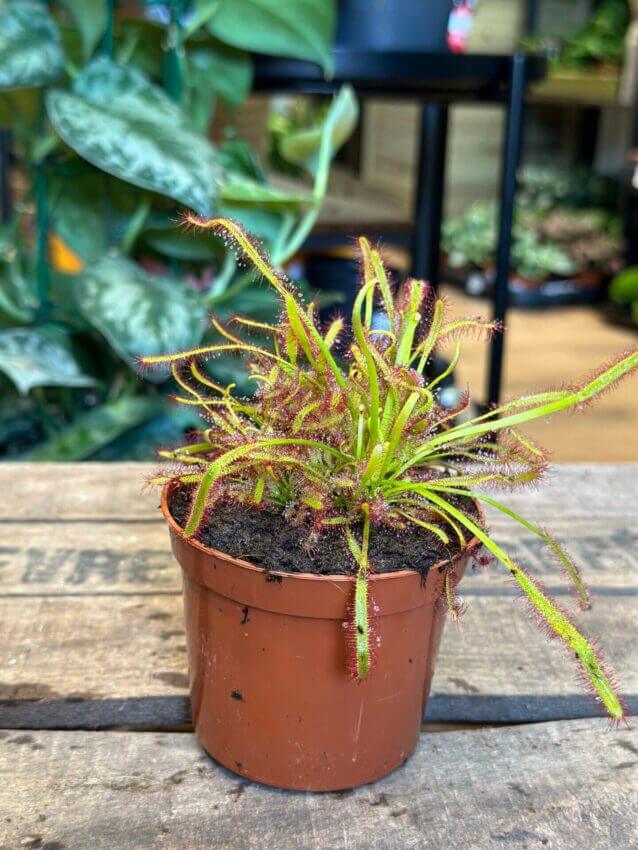
Sundew
The Sundew (Drosera), a carnivorous plant is a wonderfully unique plant that seems straight out of a sci-fi movie. With its glistening, sticky tentacles and graceful demeanour, the Sundew is a true botanical curiosity. Hailing from various corners of the globe, from the lush wetlands of Australia to the peat bogs of North America, Sundews have evolved an ingenious method to secure their nutrients in environments where the soil lacks essential sustenance. This carnivorous plant uses its sticky glands that can be found on each of its long tentacles that extend from each leave to trap insects. Whether you’re a seasoned plant enthusiast or just dipping your toes into the world of carnivorous flora, the Sundew is bound to leave you in impressed with the cunning ability of the natural world. Continue reading to learn more about the fascinating realm of the Sundew plant!
Sundews love to be in full sun, so thrive on a sunny windowsill or in a conservatory. Stand the pot in 1-2cm of water during the spring and summer months when in full growth. This plant thrives best with rainwater, soft or distilled water but even tap water is better than no water for these plants.
Over winter this plant will go into a dormancy much like the Venus Flytrap, its leaves will turn black when dead. Remove these dead leaves, keep the plant damp and you’ll see how quickly this plant bounces back to life come springtime.
The Sundews can be found here on our website.
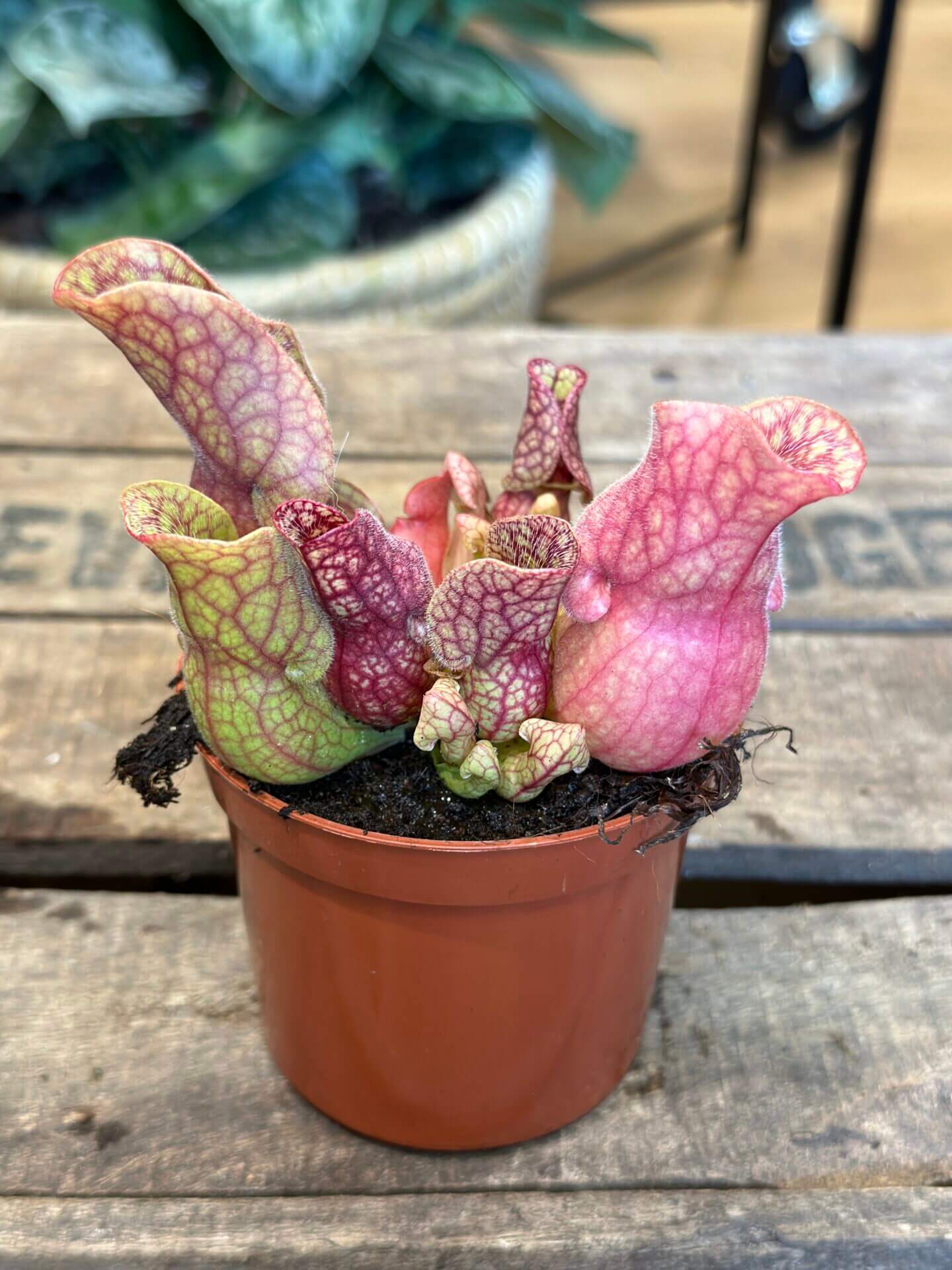
Sarracenia
Sarracenia houseplant, where elegance and otherworldly intrigue converge in the form of pitcher plants. Native to the swampy landscapes of North America, Sarracenia stands as a captivating example of nature’s ingenuity. Their trumpet-shaped pitchers, filled with tempting nectar, serve as clever traps for unsuspecting insects, they are a wonderful houseplant to tackle your pesky insect problems. Sarracenia not only showcases a blend of beauty and brutality but also offers a profound insight into the extraordinary adaptations that position them as botanical marvels. Whether you’re a fervent plant enthusiast or a curious wanderer, the world of Sarracenia is poised to astonish and ignite a sense of wonder. Prepare to be entranced by the elegance and artfulness of these carnivorous treasures from North America’s wilds!
The Sarracenias are a great carnivorous houseplant for getting rid of flies, fungus gnat, bluebottles and even wasps, while also being one of the easiest carnivorous plants to care for.
These plants like it to be hot and sunny in the summer months and can be placed in a hot conservatory if there is plenty of water. Tall Sarracenias need lots of full sun for sturdy growth but the short plants can tolerate less sun. The pots should be stood in 2-3cm of water during the summer months and soil should never be allowed to dry out completely.
During summer these houseplants pitchers will fill up with flies and start to turn brown, this is completely normal, think of it as indigestion. Never use fertiliser on these plants and there is no need to feed these plants flies, if you have no flies in your home, place this plant outside occasionally.
Our Sarracenias can be found here.
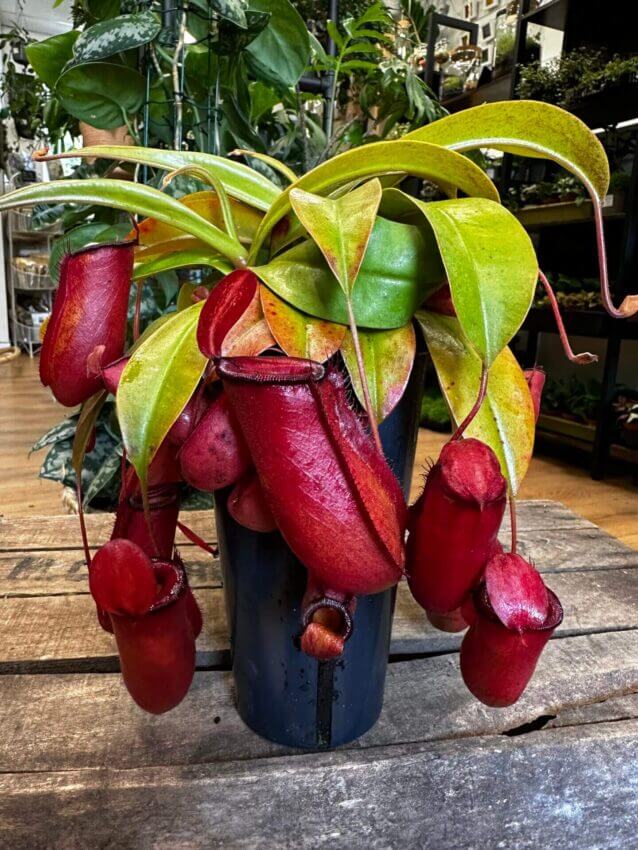
Nepenthes
Nepenthes is the alluring and diverse family of pitcher plants that have captured the imagination of botanists and nature lovers alike. Hailing from the steamy jungles and misty mountains of Asia and beyond, Nepenthes are a living testament to the wonders of adaptation and survival.
Their elegantly designed pitchers, resembling delicate works of art, serve as both deadly traps and vital nutrient reservoirs. The Nepenthes is quite a difficult plant to care for, so we recommend this houseplant to experienced carnivorous plant owners who are looking for a challenge.
This kind of houseplant will produce two types of pitcher traps, lower traps that form on lower growth and upper traps that grow when the plant gets larger and begins to climb. These can be quite tricky to care for in a typical home as they require warm temperatures and humidity of at least 60% up to 80%. The typical household has a humidity of only 40% which would not be suitable for Nepenthes.
Our Nepenthes can be found here.

Butterworts
Butterworts (Pinguicula), where elegance and efficiency meet in a symphony of botanical wonder. These charming carnivorous plants, found across a diverse range of habitats from damp meadows to rocky crevices, have mastered the art of insect entrapment in a graceful manner. With their delicate, glistening leaves and vibrant blossoms, butterworts are a true testament to the delicate balance of beauty and functionality that nature can achieve. Whether you’re a seasoned plant enthusiast or a curious newcomer, butterworts are an excellent start carnivorous houseplant to help deal with pesky insects while bringing colour to your home. Get ready to dive into the enchanting world of butterworts and uncover the hidden marvels that make them a true botanical treasure!
Butterworts make excellent houseplants as they grow these bright colourful flowers. These carnivorous houseplants do not thrive in full sun, they will grow better in a north or east-facing windowsill. Unlike the other carnivorous houseplants in this blog, the butterwort can handle straight tap water (in non-polluted areas!) rather than needing distilling or filtered water. It is recommended these plants be placed on a saucer or shallow tray. Keep the plant standing in water, make sure to water the saucer, not the plant.
Butterworts are probably one of the easiest and an excellent entry into carnivorous plants and can be found here.
As we conclude our journey through the fascinating world of carnivorous plants, one thing becomes clear: nature’s creativity knows no bounds. From the cunning traps of Venus flytraps and the sticky allure of Sundews to the elegant pitchers of Sarracenia and the delicate grace of Butterworts, these plants have evolved an astonishing array of strategies to thrive in some of the harshest conditions. Their captivating beauty, intricate mechanisms, and extraordinary adaptations remind us of the incredible diversity and resilience of life on our planet. As we marvel at these botanical marvels, let’s also reflect on the delicate balance that exists in ecosystems, where every organism plays a vital role. Happy planting and may your curiosity continue to bloom as brightly as these captivating



